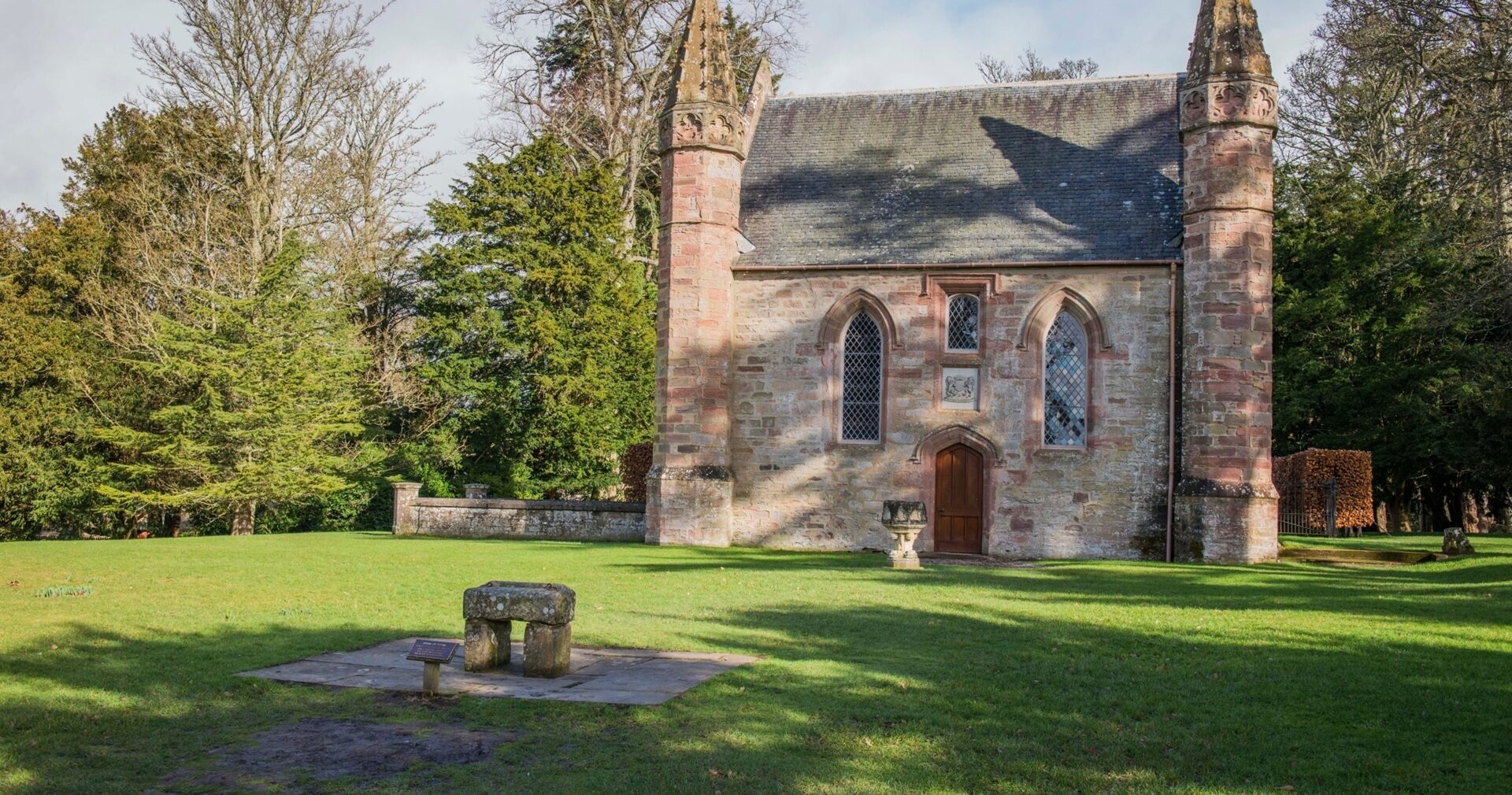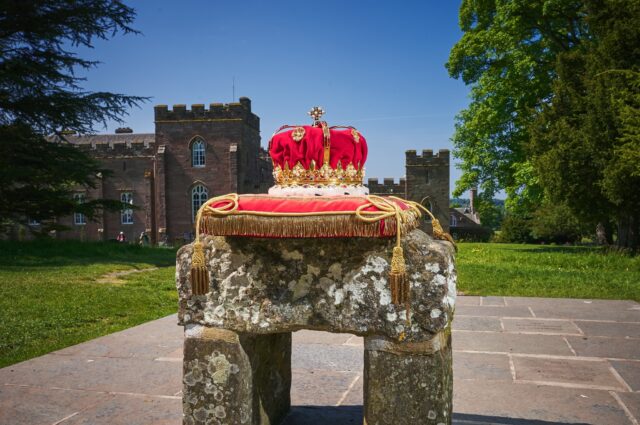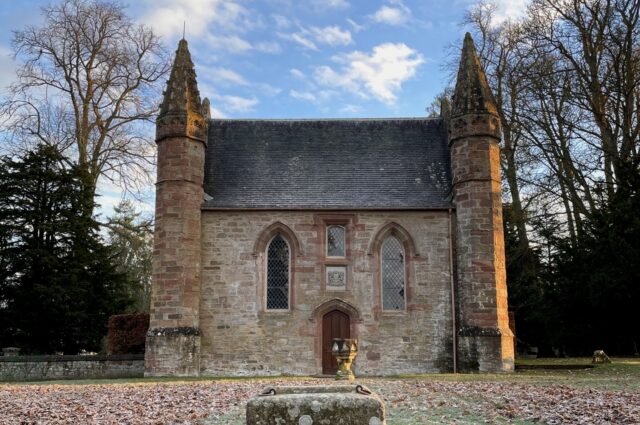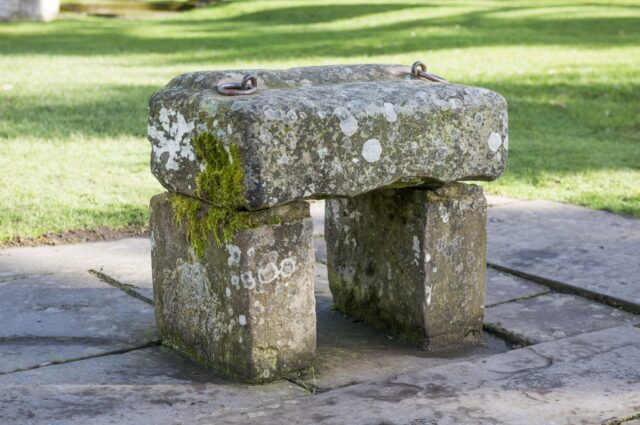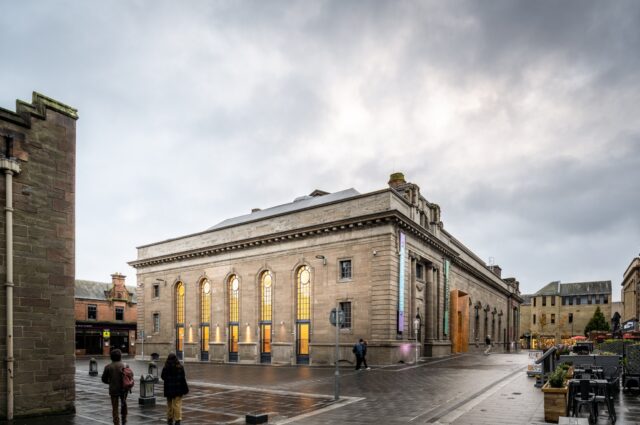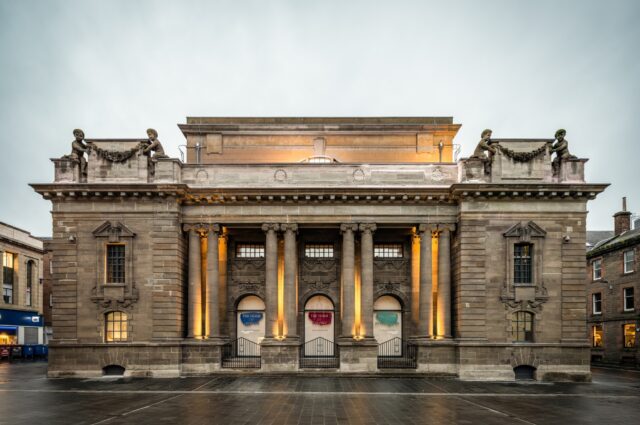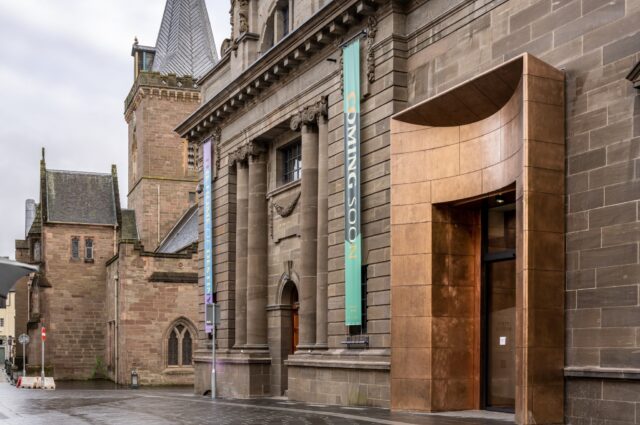The Stone's Origins
Some people suggest that it was Jacob’s Pillow, brought from the Holy Land, via Spain, Ireland and the West of Scotland, to arrive at Scone in the 9th century. Others believe it may have been a royal stone belonging to the Scots from Antrim, or the Picts from the north-east. It could even have been a Roman altar stone taken from the Antonine Wall.
Wherever it came from, it was certainly in use at Scone as a crowning-seat between the 9th and 13th centuries, though there is as much confusion about its appearance as its provenance. Some contemporary accounts describe it as being hollowed like a chair or seat. Some say it was blackish or made of marble. Some say it was sculpted, some that it was carved. Others believe it was banded with metal and set with lifting rings at each corner.
During its five centuries at Scone, the Stone was probably kept in the monastic church and only taken out to the Moot Hill for enthronements. At first it may simply have been covered with embroidered cloth for the king to sit on. Later it would likely have been set into a wooden throne. By now, as Shakespeare knew, installing the new king on the Stone had become the hereditary duty of the Earls of Fife, Chiefs of Clan MacDuff.
When John Balliol, the King of Scots, rebelled in 1296, Edward I marched north and removed what he believed to be the Stone to Westminster. There he had it mounted beneath the seat of a wooden throne, so that to be seated there was, symbolically, to have dominion over Scotland. Successive English monarchs have since been crowned there.
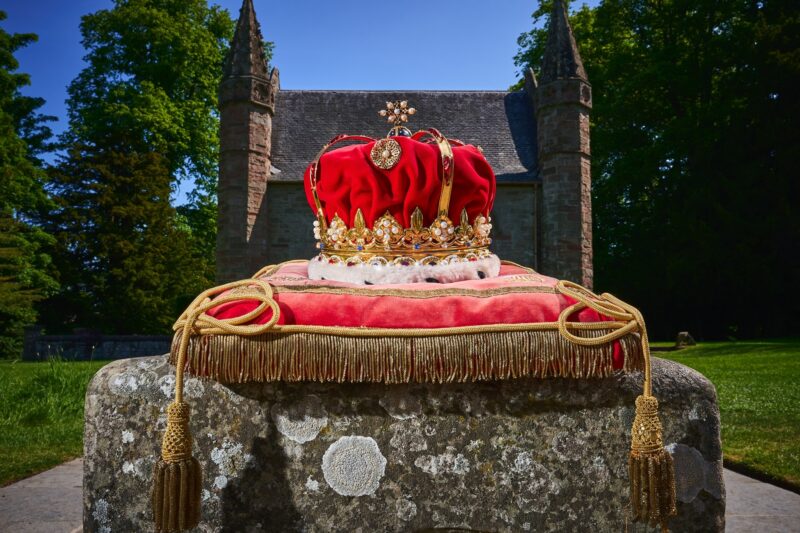
The Stone remained at Westminster for the next six centuries until its sensational disappearance on Christmas Day in 1950, when a group of four Scottish students— Ian Hamilton, Gavin Vernon, Kay Matheson and Alan Stuart—broke into Westminster Abbey and removed it. The gesture was intended to rally support for Scottish independence.
As they took it from the Abbey the Stone broke in two. They drove the larger part to Kent and buried it in a field until the nationwide hue and cry—which included the first closure of the border between Scotland and England for more than 400 years— had died down.
Then they took the two parts to Glasgow where a stonemason, Robert Gray, made the necessary repairs. Finally, in April 1951, they left the Stone in Arbroath Abbey and tipped off the police. (One account has it that before proceeding to Arbroath they first called at Scone Palace which was then occupied by a girls’ boarding school. The law-abiding headmistress refused to accept the Stone on the grounds that it was stolen property.)
After its discovery in Arbroath—where Scottish nationhood had been asserted by the Declaration of Arbroath in 1320—the Stone was duly returned to Westminster where it remained until being brought back to Scotland in 1996. Despite popular support for a return to Scone, it was eventually set to rest in Edinburgh Castle, 700 years after it was first taken by Edward I, and one year before the referendum in which the people of Scotland voted for a devolved parliament.

But despite the return of this great symbol of Scottish nationhood, the mesmerising question remains: is the stone that you can visit today the real one? Or did the monks dupe Edward, Hammer of the Scots, by handing over a fake all those centuries ago? And if Edward believed he had the real one, why then did he return to ransack Scone Abbey again two years later, in 1298?
What we do know is that the stone used in current coronations is of old red sandstone, very similar to that from which Scone Palace is built. This could mean that the original Stone was locally quarried, perhaps by the Picts or perhaps by Kenneth MacAlpin. But this theory contradicts most of the others about the Stone’s origins. Nor does the red sandstone match any of the early descriptions.
Alternatively, it could mean that once the Abbot of Scone heard the English were coming, he hid the original and had a substitute made from local stone. Edward’s men would have been none the wiser, though the king himself may have had his suspicions. If this is so, the Stone on which successive kings and queens, including the present monarch, Charles III, have been crowned since the 14th century is nothing but a copy.
Many attempts have since been made to find a hidden stone, and much has been written about its possible whereabouts. But despite a couple of 19th century ‘discoveries’, the identity and resting place of the real Stone of Destiny remain a tantalising mystery to this day.
And as a final twist to the affair, at the time it was rumoured that there was the possibility that even if Edward did take the real Stone in 1296, the young Scottish Nationalists had it copied, and it was the copy that they left to be found by police at Arbroath Abbey in January 1951. However recent analysis of the stone has shown it to date far beyond the 1900's making this an unlikely story.
Ni fallat fatum Scoti quocunque locatum Invenient lapidem, regnare tenentur ibidem
As long as fate plays fair
Where this Stone lies the Scots shall reign
So foretold the chronicler John of Fordoun in 1383. But where does the real Stone lie? That is the question.
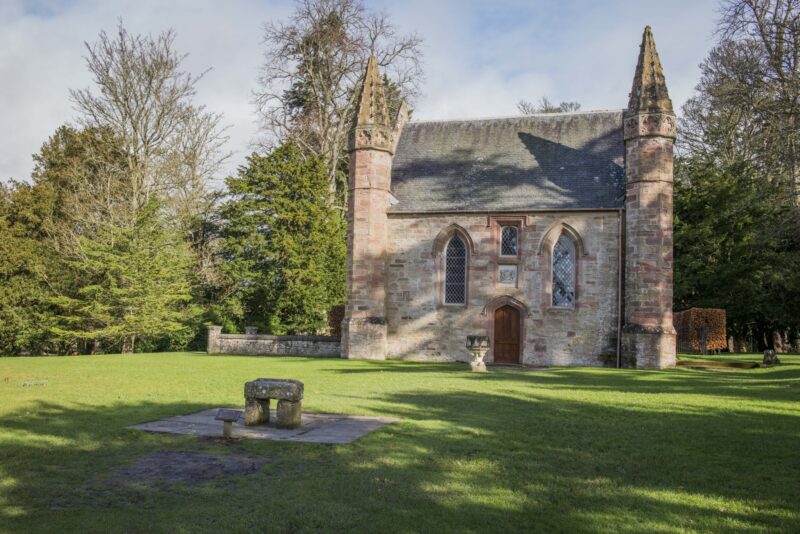
The Stone Today
Having been on display at Edinburgh castle since 1996, the Stone of Destiny has returned to Perthshire for the first time in 700 years. The Stone of Destiny has a new home as the centrepiece of the new Perth Museum, where you can see the stone as part of a free immersive experience, taking you through it's complex and mysterious history.
Opened on Saturday 30 March 2024, Perth Museum highlights the many objects and stories that put Perth and Kinross at the heart of Scotland’s history.
You can read more about the exhibits at Perth Museum, and book your Stone of Destiny experience through the Perth Museum website.
